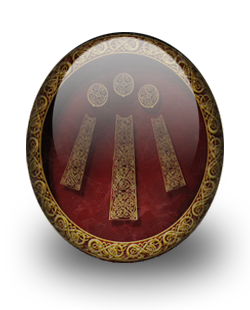The Elements
The Three Primary Elements in Druidry.
The Druid Nature elements consist of Three Elements
Nwyfre (pronounced 'NOOiv-ruh') is an old Welsh term meaning 'sky' or 'heaven' As an element, nwyfre is the source of life and consciousness, and modern Druids often refer to it simply as the life force. Like the Element Air, Nwyfre also refers to sky but air, breath and spirit have common roots -the English word spirit itself comes from the Latin word 'spiritus' meaning breath. Nwyfre is represented by the colour White.Water - Gwyar (pronounced 'GOO-yar') literally means 'blood' in old Welsh, but its more general meaning is 'flow' or 'fluidity' As an element, Gwyar is the source of change, motion, growth, and decay. Water is represented by the colour Blue.
Earth - Calas (pronounced 'CAH-lass') comes from the same root as 'Caled', Welsh for 'hard' and means 'solidity' As an element Calas is the source of form, differentiation, manifestation and stability. Earth is represented by the colour Green.
The Five Elemental system.
Many traditions hold a belief in the five classical elements, although they are seen as symbolic as representations of the phases of matter. These five elements are invoked during many magical rituals, notably when consecrating a magic circle. The five elements are Air, Fire, Water, Earth, and Spirit, With Spirit uniting the other four. Various analogies have been devised to explain the concept of the five elements for instance a tree, which is composed of Earth (with the soil and plant matter), Water (sap and moisture), Fire (through photosynthesis) and Air (the creation of oxygen from carbon dioxide), all of which are believed to be united through Spirit.


Traditionally each element has been associated with a cardinal point of the compass - Air with East, Fire with South, Water with West, Earth with North, and the Spirit with centre. in Southern England these are the most commonly used points but depending on your geographic location the points can be changed relative to your location for example if you are on the East coast of USA, Water could be used in the East as the Atlantic Ocean is to the East etc.
Nwyfre is like the prana of yoga, or the Chi' (pronounced 'Chee') of the Taoists. It is the constant stream of life energy flowing through every person, creature, tree, and stone. It is the current which travels along the web of life, the unifying energy which connects us all. When combined with Earth, Water, Air and Fire, the result is Life.
When we form and cast the circle, we are creating not just a place for our ritual. We are creating a focus. A central point in the middle of the circle through which we connect via the Nwyfre to the whole web of Life on this lovely Planet. And when we welcome the Elements to our Circle, we do so not just in the physical sense. We are embracing them for all their gifts that make us what we are.
Nwyfre should not be confused with Awen. They are separate but complementary. Awen is an elusive energy within this world that brings illumination, wisdom and inspiration. It is a universal force that we seek to find and join with to gain its gifts. Nwyfre, the Life force is also an energy but it is always flowing through us all. In ritual, we seek to connect through this Life Force with the whole natural world.
The Awen
